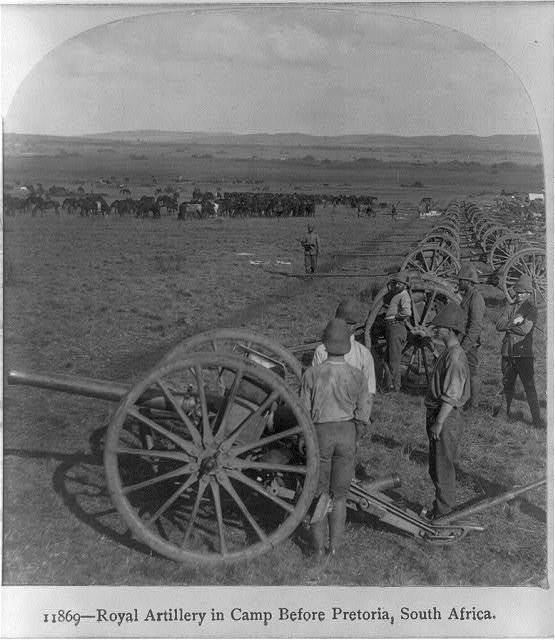Type Field gun In service 1892–1918 Barrel length | Place of origin United Kingdom Used by British Empire | |
 | ||
Wars Second Boer War
World War I | ||
The Ordnance BL 15 pounder, otherwise known as the 15 pounder 7 cwt, was the British Army's field gun in the Second Boer War and some remained in limited use in minor theatres of World War I. It fired a shell of 3-inch diameter with a maximum weight of 15 pounds (6.8 kg), hence its name which differentiated it from its predecessor "12 pounder" 3-inch gun which fired shells weighing only 12.5 pounds (5.7 kg).
Contents
History
The gun was a modified version of the previous BL 12 pounder 7 cwt gun of 1883. When the modern smokeless propellant cordite replaced gunpowder in 1892 it was decided that the 12 pounder was capable of firing a heavier shell up to 15 lb (6.8 kg). A 14 pound shell was adopted and the gun was renamed a 15 pounder.
Mk I carriage : recoil was controlled by drag-shoes. These were placed under the wheels, and were connected by chains and cables to the wheel hubs and the trail.
Mk II carriage : this had the same drag-shoe system and also a hydraulic buffer. This only allowed a short recoil, and was not successful.
Mk III carriage : In 1899 a rudimentary recoil system was added, consisting of a "spade" beneath the axle which dug in when the gun recoiled, connected by a steel wire to a spring in a cylinder on the trail. Mk I and II carriages fitted with these were known as Mk 1* and Mk II*. The latter retained the hydraulic buffer.
Although the whole gun jumped and moved backwards on firing, the spring returned it to firing position and hence still increased the rate of fire compared to the old model without any recoil mechanism. Hogg and Thurston comment ironically : "It is said that it checked it [recoil] so well that the gun usually recoiled 1 foot and jumped forward 2 feet".
Other Mks of carriage followed, all with axle-spades, but without buffers.
From 1904 the BL 15 pounder was superseded by the modern QF 18 pounder. Remaining BL 15 pounders were upgraded as the BLC 15 pounder to equip the Territorial Force with an "ersatz QF gun".
Combat use
The gun was normally towed by 6 horses, in 3 pairs.
Second Boer War
349 guns were in service in the Second Boer War 1899–1902 and fired 166,548 shells out of the British total of 233,714.
While the gun could fire a shell up to approximately 5800-5900 yards, the No. 56 time and percussion fuze in use in 1899 could only be set for a maximum timed range of 4100 yards because it only burned for 13 seconds. The shrapnel shells in use were usually time-set to burst in the air above and in front of the enemy. Hence the gunners had to get within approximately 4200 yards of the enemy to fire on them. The fuze could be set to explode on contact (percussion) up to the maximum range, but shrapnel exploding on contact was of little use. This was rectified later in the war by the No. 57 "blue fuze" which could be time set up to 5800-5900 yards.
World War I
7th Field Battery (4 guns, originally No. 2 and No. 6 Light Batteries) towed by oxen and known as the Oxo Battery and manned by Mauritian and South African gunners fought in the German East Africa campaign in World War I.
